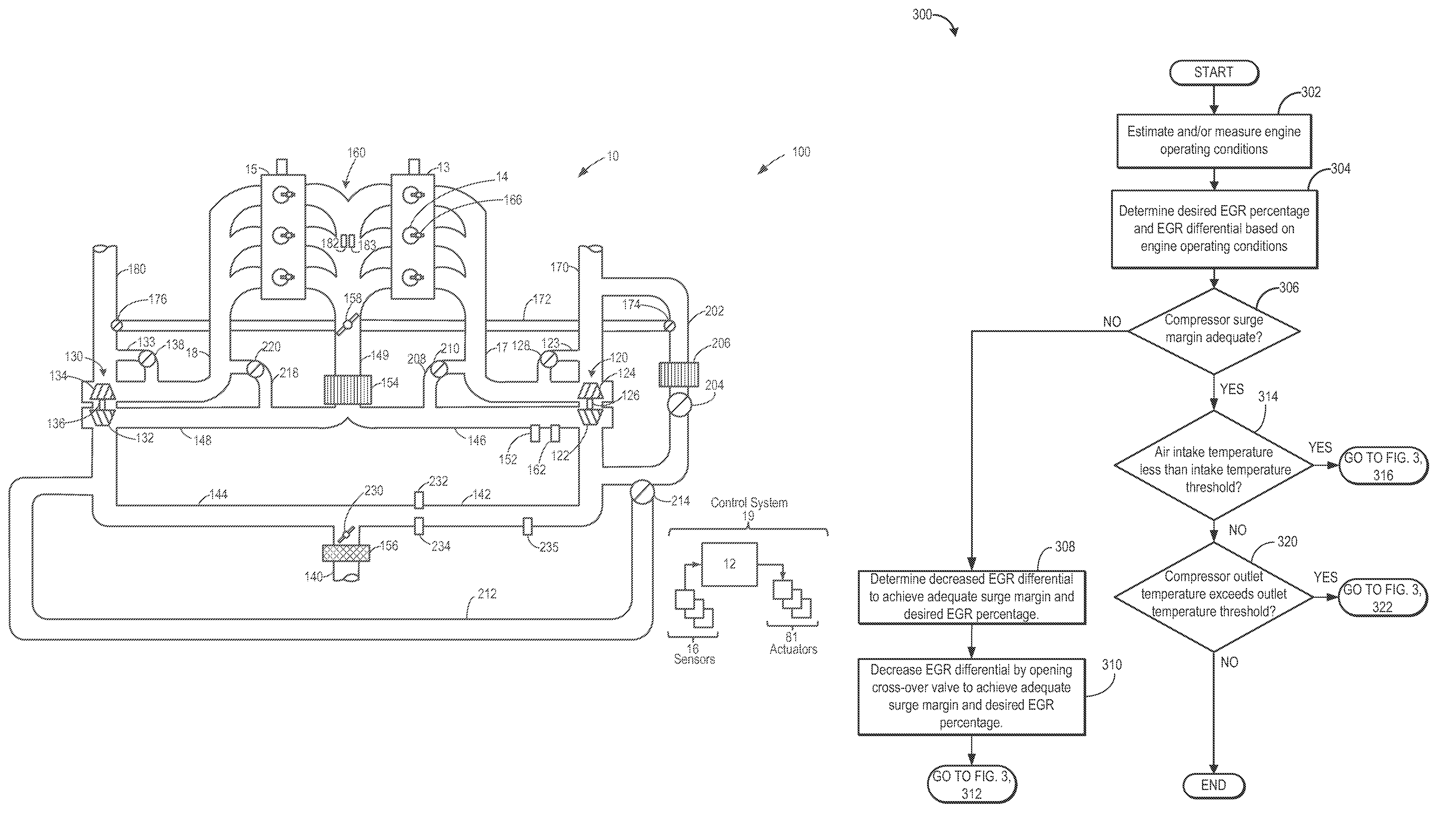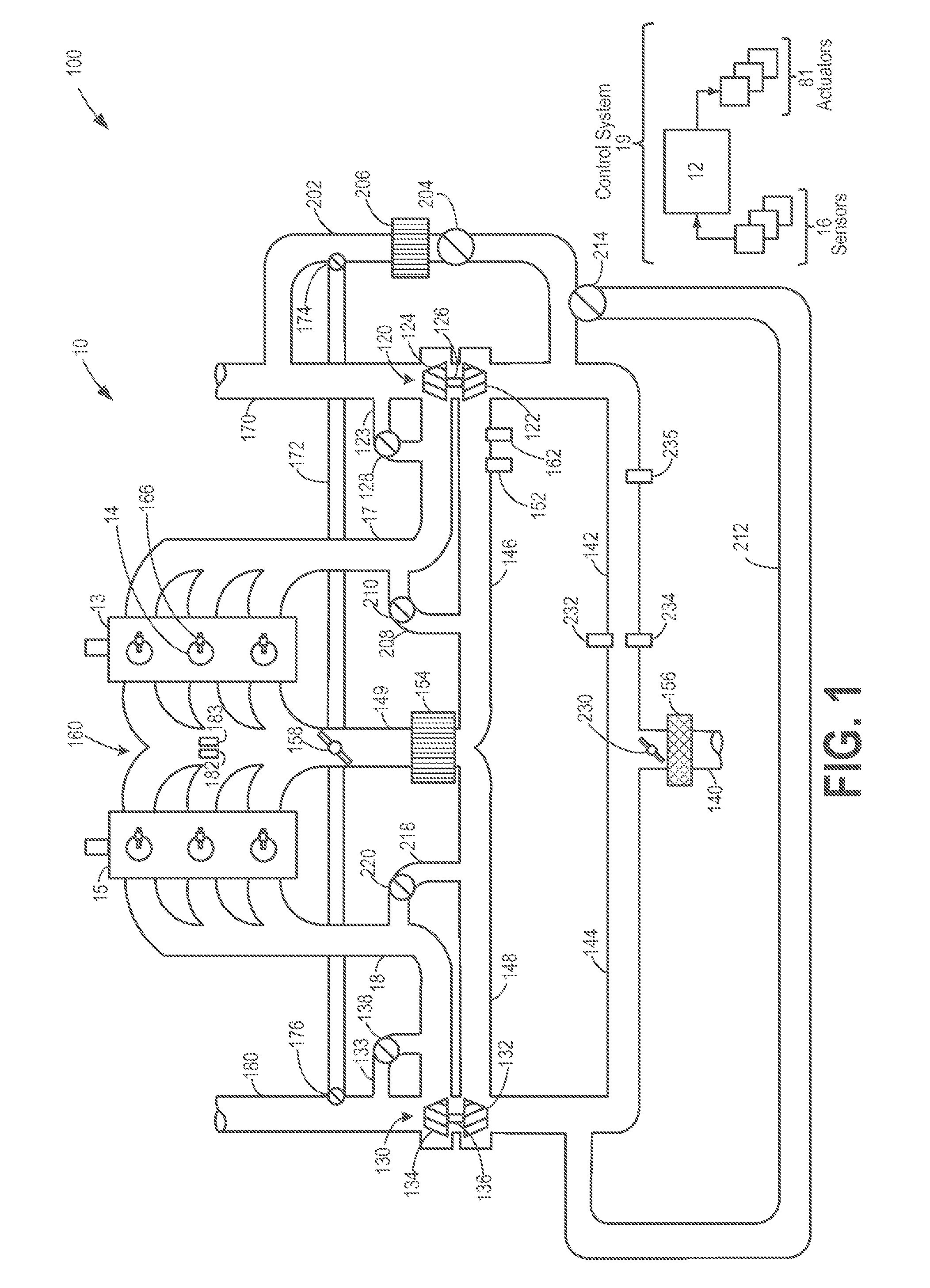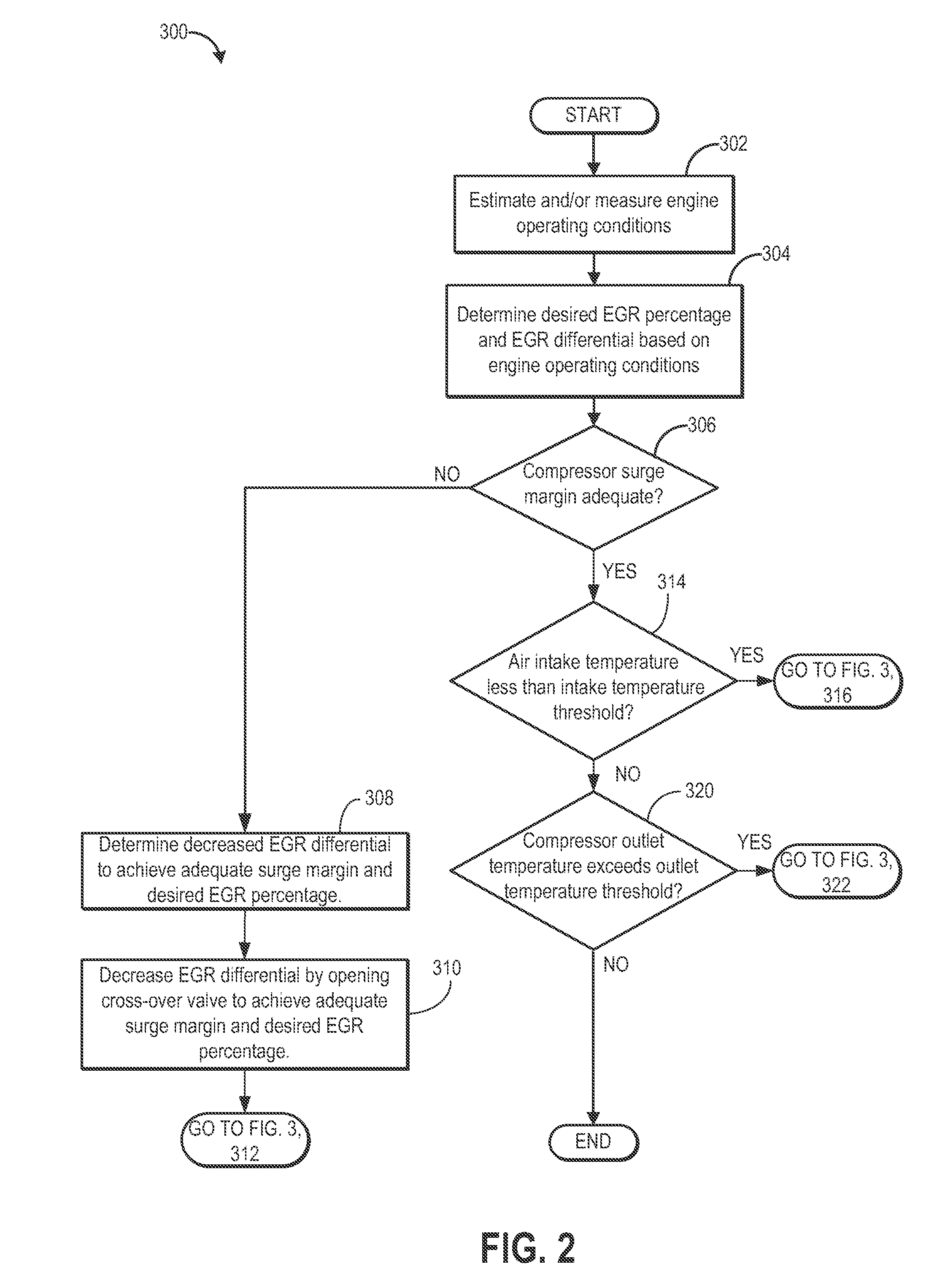Method and system for exhaust gas recirculation
a technology of control system and exhaust gas, which is applied in the direction of machines/engines, mechanical equipment, non-fuel substance addition to fuel, etc., can solve the problems of engine misfire, torque and engine speed loss, engine damage, etc., and achieve the effect of increasing power outpu
- Summary
- Abstract
- Description
- Claims
- Application Information
AI Technical Summary
Benefits of technology
Problems solved by technology
Method used
Image
Examples
Embodiment Construction
[0014]The following description relates to systems and methods for operating an engine including a first turbocharger having a first compressor and a second turbocharger having a second compressor (FIG. 1). Based on engine operating conditions, a desired EGR percentage and an EGR differential may be determined (FIG. 2). Further, based on a determination of whether an adequate surge margin exists, whether an air intake temperature is less than an intake temperature threshold, and whether a compressor outlet temperature exceeds an outlet temperature threshold, an EGR differential may be adjusted (FIGS. 2-3).
[0015]FIG. 1 shows a schematic depiction of an example turbocharged engine system 100 including a multi-cylinder internal combustion engine 10 and twin turbochargers 120 and 130. As one non-limiting example, engine system 100 can be included as part of a propulsion system for a passenger vehicle. Engine system 100 can receive intake air via intake passage 140. Intake passage 140 ca...
PUM
 Login to View More
Login to View More Abstract
Description
Claims
Application Information
 Login to View More
Login to View More - R&D
- Intellectual Property
- Life Sciences
- Materials
- Tech Scout
- Unparalleled Data Quality
- Higher Quality Content
- 60% Fewer Hallucinations
Browse by: Latest US Patents, China's latest patents, Technical Efficacy Thesaurus, Application Domain, Technology Topic, Popular Technical Reports.
© 2025 PatSnap. All rights reserved.Legal|Privacy policy|Modern Slavery Act Transparency Statement|Sitemap|About US| Contact US: help@patsnap.com



